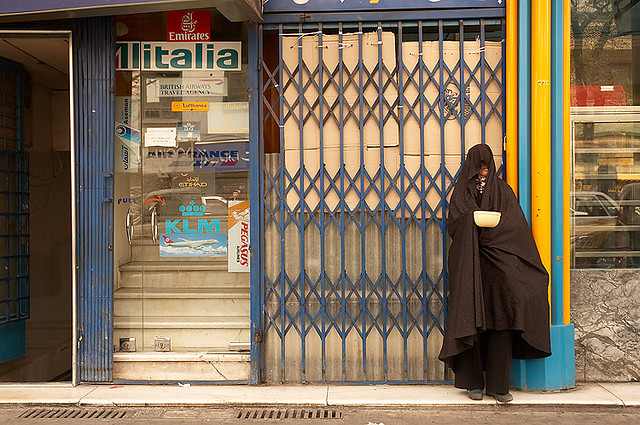Hijab (which means cover) is a traditional head cover or wrap worn by Muslim women. Many Muslim women around the world wear it. It has numerous styles and colors, and its fashion varies all the time. It also varies from one country to the other, so women in Pakistan have a different hijab style from women in Saudi Arabia, and so on. You can often tell where a woman comes from by looking at the way she is dressed including the way she styles her hijab.
In some areas of Saudi Arabia, women are required to cover up fully while other areas are less strict.
Likewise, some families require a certain dress style while others do not. When you walk in the street in an Islamic or Arab country, you see different styles and ways of wearing hijab and other outfits that go with it, e.g. in Egypt you often come across unveiled women, women with a small hijab and women with a long one. It is very common.
Some people think that the more a woman is covered, the more religious she is. However, this is not always the case! In many parts of the Arab and Islamic world, hijab became more of a matter of tradition than religion. So, if a girl grows up in a family where most women wear hijab, she decides to wear it like everyone else, as it is what is expected of a girl.
The video link below shows a tutorial of how to wrap one of the most common hijab styles.
http://www.youtube.com/watch?v=yGYCeFIFM4s&feature=related
Do you know that Hijab was very common in Arabia even before Islam? It was often the case that free women covered up to show their status as opposed to slave women who did not cover up!

Image by Kamyar Adl on Flickr


Comments:
Rena Vanhulle:
Hi there, simply became aware of your weblog thru Google, and found that it is really informative. I’m going to watch out for brussels. I’ll appreciate if you happen to proceed this in future. Lots of other people will be benefited from your writing. Cheers!
aziza:
@Rena Vanhulle Thank you very much for the comment. Aziza
Arab Fashion Designer:
I also want to share more on hijab like hijab protects women from the male gaze and allows them to become autonomous subjects. Others have argued that the veil only provides the illusion of protection and serves to absolve men of the responsibility for controlling their behavior.
Issac Maez:
This is getting a bit more subjective, but I much prefer the Zune Marketplace. The interface is colorful, has more flair, and some cool features like ‘Mixview’ that let you quickly see related albums, songs, or other users related to what you’re listening to. Clicking on one of those will center on that item, and another set of “neighbors” will come into view, allowing you to navigate around exploring by similar artists, songs, or users. Speaking of users, the Zune “Social” is also great fun, letting you find others with shared tastes and becoming friends with them. You then can listen to a playlist created based on an amalgamation of what all your friends are listening to, which is also enjoyable. Those concerned with privacy will be relieved to know you can prevent the public from seeing your personal listening habits if you so choose.
Walton Chapa:
I love reading through a post that can make men and women think. Also, many thanks for allowing for me to comment!
Beta:
Thank you for sharing this information with us,I respect your opinion and I agree with you, when you said that “HIJAB is a tradition and not a religion”,in other word means ‘man made”, or you can say man controlling.
Some of this countries use the religion to control people especially the woman’s! No disrespect to any religion,but I believe that in general all religions are other form or shape of dictating or controlling people!
Beta:
To learn about more about Muslim watch PBS
http://www.pbs.org/muhammad/timeline_flash.shtml